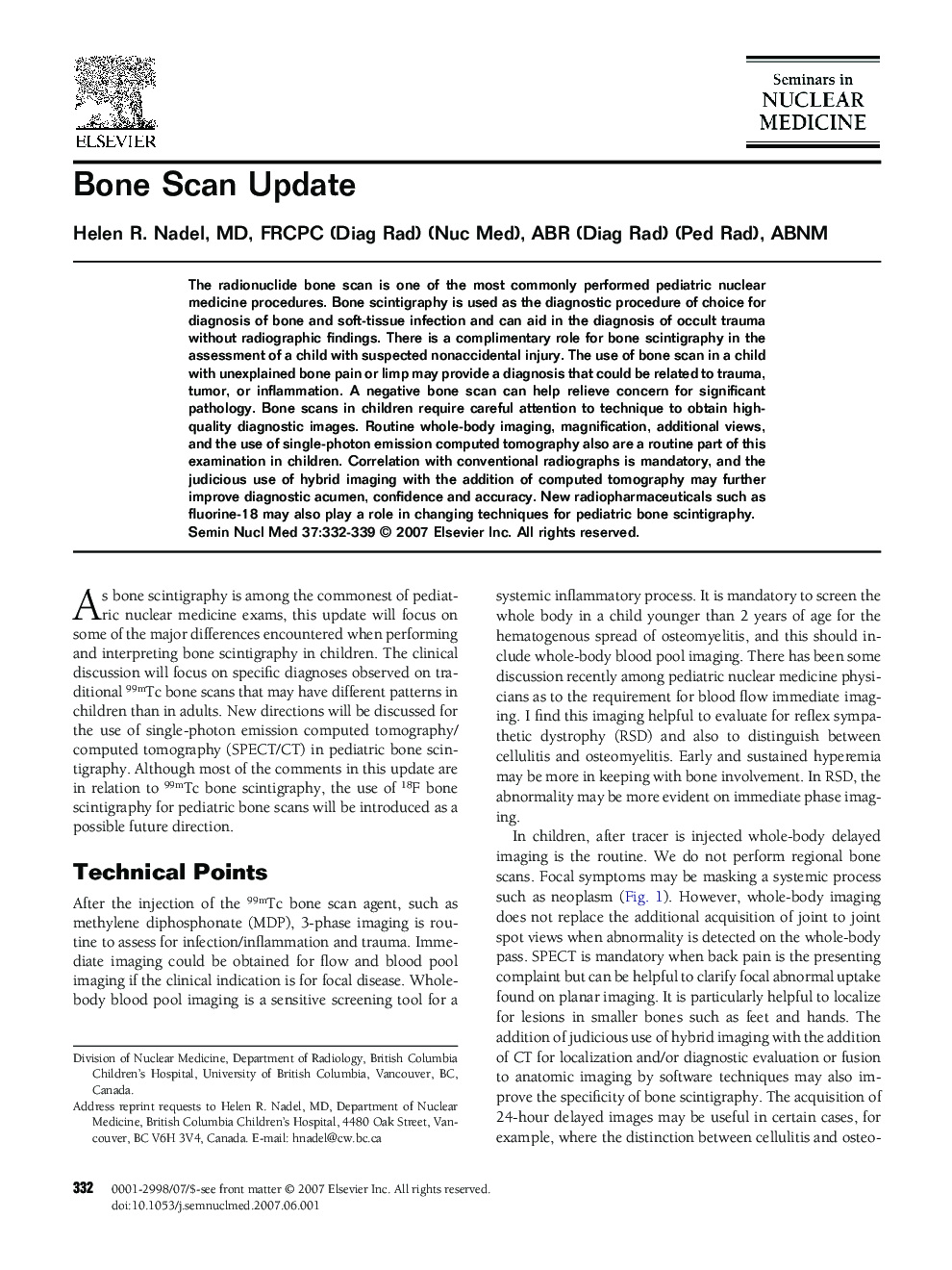| Article ID | Journal | Published Year | Pages | File Type |
|---|---|---|---|---|
| 4251428 | Seminars in Nuclear Medicine | 2007 | 8 Pages |
The radionuclide bone scan is one of the most commonly performed pediatric nuclear medicine procedures. Bone scintigraphy is used as the diagnostic procedure of choice for diagnosis of bone and soft-tissue infection and can aid in the diagnosis of occult trauma without radiographic findings. There is a complimentary role for bone scintigraphy in the assessment of a child with suspected nonaccidental injury. The use of bone scan in a child with unexplained bone pain or limp may provide a diagnosis that could be related to trauma, tumor, or inflammation. A negative bone scan can help relieve concern for significant pathology. Bone scans in children require careful attention to technique to obtain high-quality diagnostic images. Routine whole-body imaging, magnification, additional views, and the use of single-photon emission computed tomography also are a routine part of this examination in children. Correlation with conventional radiographs is mandatory, and the judicious use of hybrid imaging with the addition of computed tomography may further improve diagnostic acumen, confidence and accuracy. New radiopharmaceuticals such as fluorine-18 may also play a role in changing techniques for pediatric bone scintigraphy.
